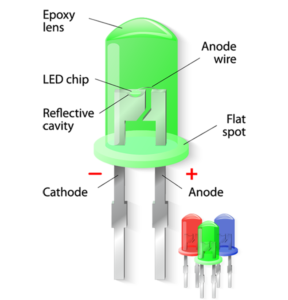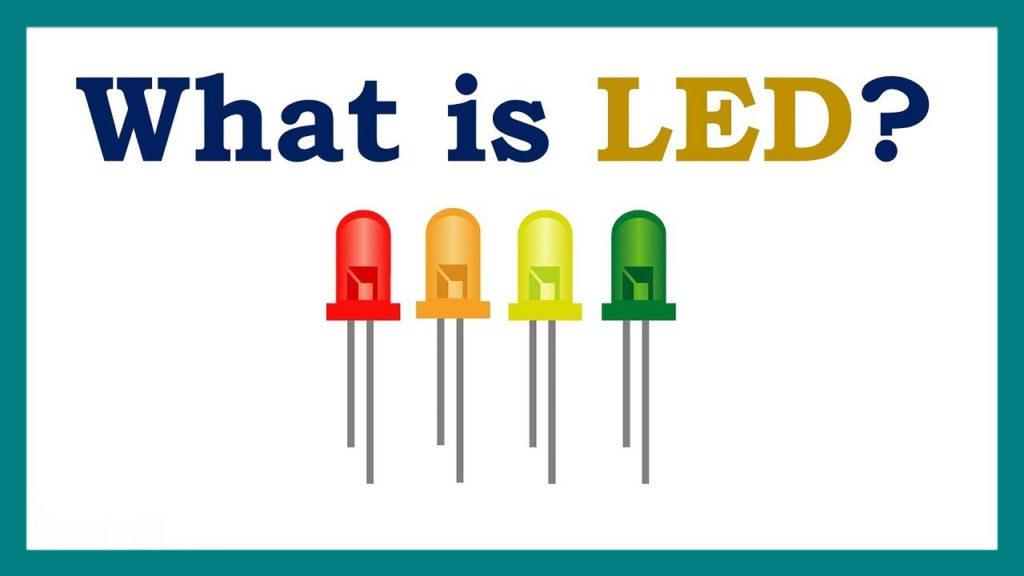What is LED?
LED
LEDs are a simple invention with huge potential to change the lighting industry for the better. Don’t know much about them? what is LED? Here are some things you need to know:

What Does LED Stand For?
LED stands for light-emitting diode:
A diode is an electrical device or component with two electrodes (an anode and a cathode) through which electricity flows – characteristically in only one direction (in through the anode and out through the cathode).
Diodes are generally made from semiconductive materials such as silicon or selenium – substances that conduct electricity in some circumstances and not in others (e.g. at certain voltages, current levels, or light intensities).
What is LED?
what is LED? A light-emitting diode is a semiconductor device that emits visible light when an electrical current passes through it. It is essentially the opposite of a photovoltaic cell (a device that converts visible light into electrical current).
Did You Know? There is a similar device to an LED called an IRED (Infrared Emitting Diode). Instead of visible light, IRED devices emit IR energy when electrical current is run through them.

How Do LED Lights Work?
So much of what is LED, but how does it work ? It’s really simple actually, and very cheap to produce…which is why there was so much excitement when LED lights were first invented!
The Technical Details: LED lights are composed of two types of semiconducting material (a p-type and an n-type). Both the p-type and n-type materials, also called extringent materials, have been doped (dipped into a substance called a “doping agent”) so as to slightly alter their electrical properties from their pure, unaltered, or “intrinsic” form (i-type).
The p-type and n-type materials are created by introducing the original material to atoms of another element.
These new atoms replace some of the previously existing atoms and in so doing, alter the physical and chemical structure.
The p-type materials are created using elements (such as boron) that have less valence electrons than the intrinsic material (oftentimes silicon). The n-type materials are created using elements (such as phosphorus) that have more valence electrons that the intrinsic material (oftentimes silicon).
The net effect is the creation of a p-n junction with interesting and useful properties for electronic applications. What those properties are exactly depends mostly on the external voltage applied to the circuit (if any) and the direction of current (i.e. which side, the p-type or the n-type, is connected to the positive terminal and which is connected to the negative terminal).
Application of the Technical Details to LED Lighting
When an light-emitting diode (LED) has a voltage source connected with the positive side on the anode and the negative side on the cathode, current will flow (and light will be emitted, a condition known as forward bias). If the positive and negative ends of the voltage source were inversely connected (positive to the cathode and negative to the anode), current would not flow (a condition known as reverse bias).
Forward bias allows current to flow through the LED and in so doing, emits light. Reverse bias prevents current from flowing through the LED (at least up until a certain point where it is unable to keep the current at bay – known as the peak inverse voltage – a point that if reached, will irreversibly damage the device).
While all of this might sound incredibly technical, the important takeaway for consumers is that LEDs have changed the lighting landscape for the better, and the practical applications of this technology are almost limitless.
About Us

123 LED Lighting is an example of such a company. It basically tests, evaluates and guides consumers in purchasing the right LED equipment. To get started, you can visit our website 123 LED lighting or Contact Us is all that is necessary. A member of its customer care department is always on standby and very eager to receive any incoming inquiries and act on them soonest possible.
